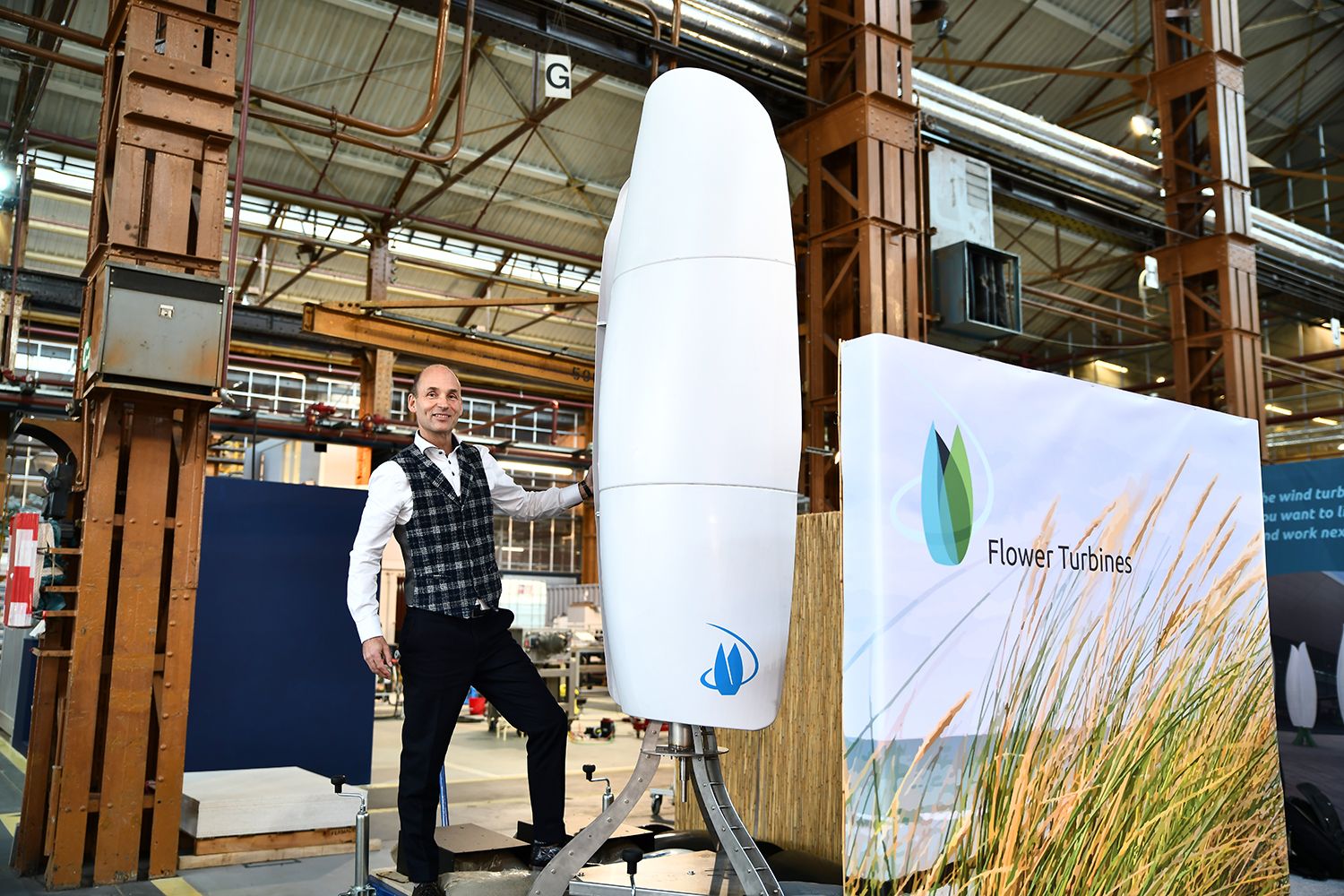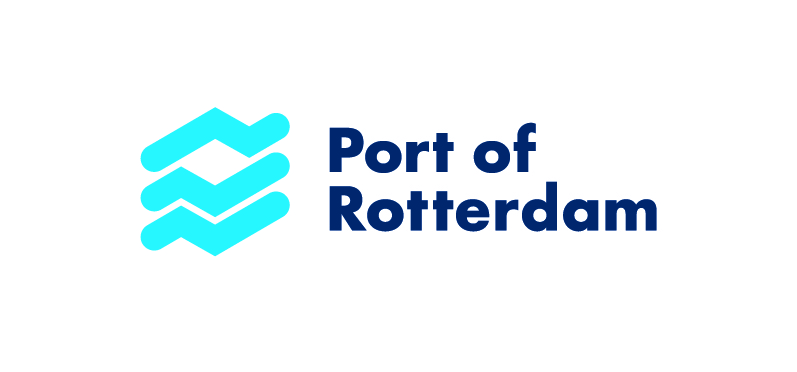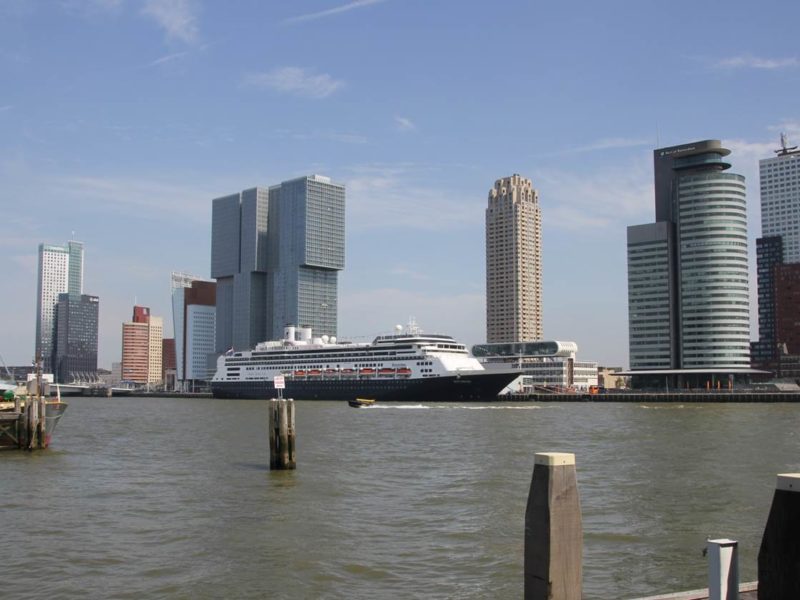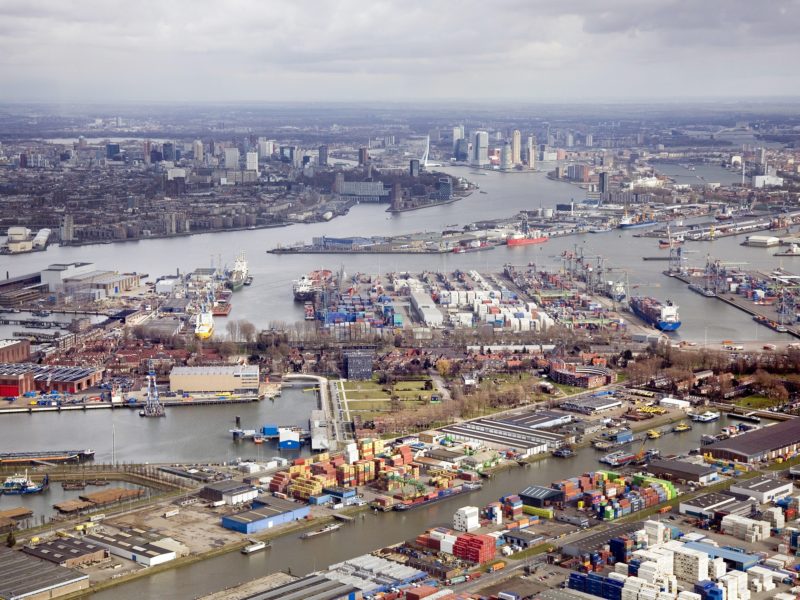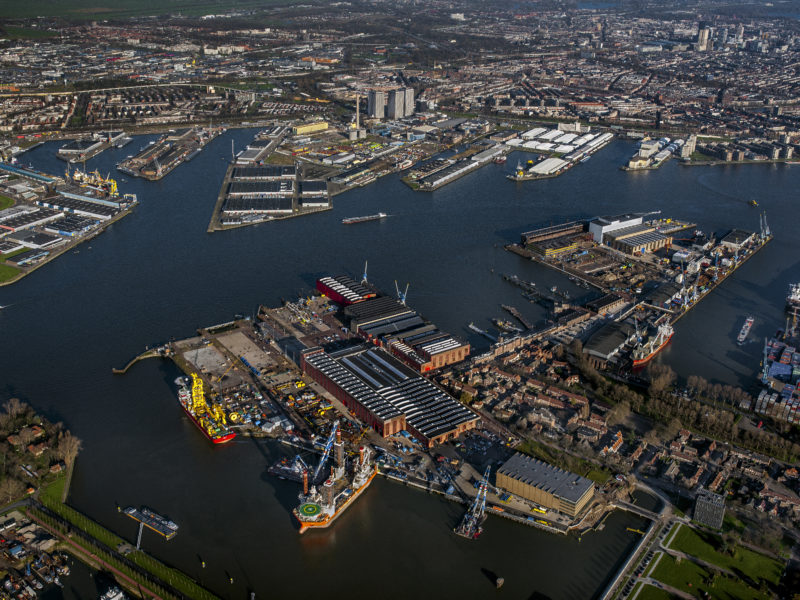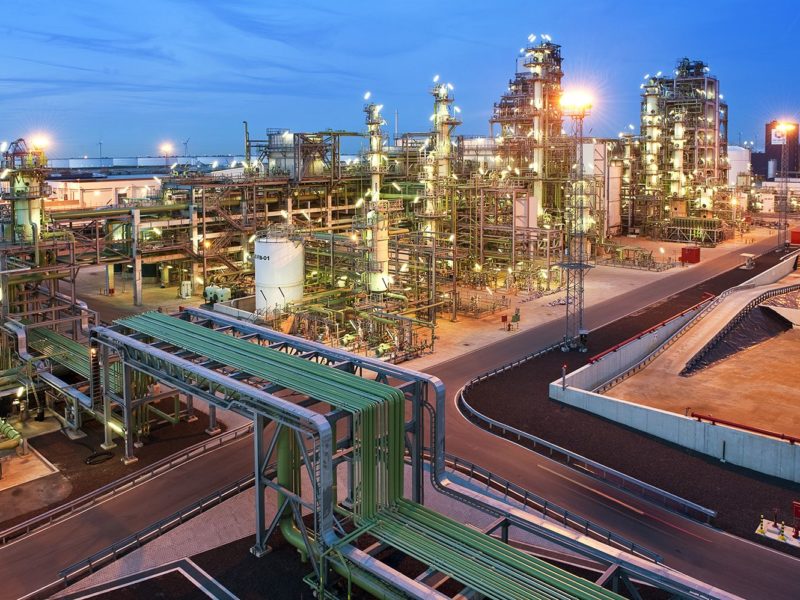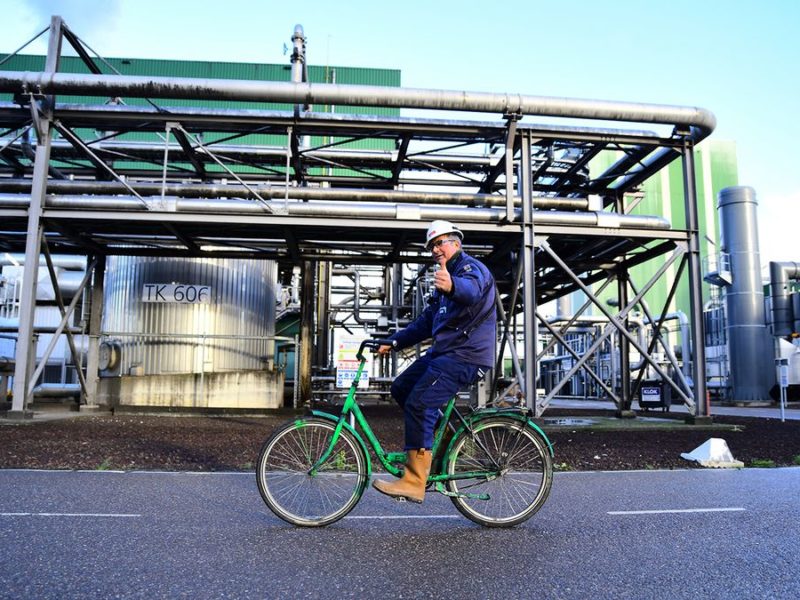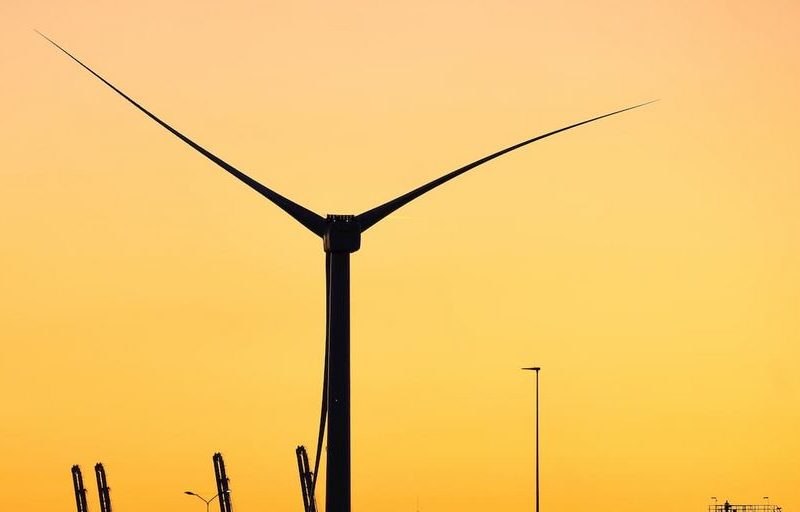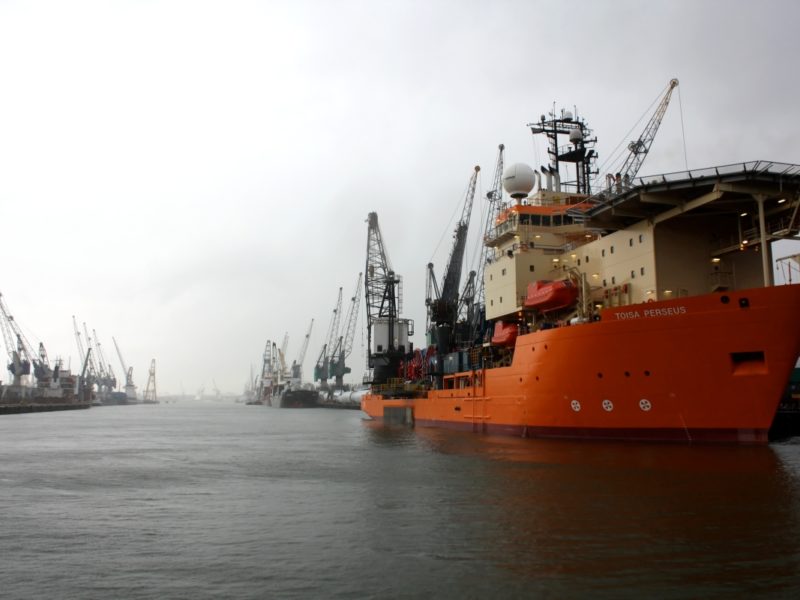Flower Turbines, a company that produces small innovative wind turbines suitable for urban areas, was established a few years ago. In 2019 the technology was scouted by PortXL, an innovative acceleration programme for starting entrepreneurs. The company recently established itself in the ‘Innovation Dock’ on RDM Heijplaat.
The concept of
Flower Turbines was developed a few years ago. CEO Daniël Farb created a design and built a test turbine, energy transition was at that point still far away. When PortXL scouted the technology, Daniël Farb came in contact with his future partner, Roy Osinga, the current European Director of Flower Turbines. At that time, Roy Osinga was working as Regional Manager at ECOncrete. They were accepted on the programme together and later presented the turbine to various companies from the Rotterdam maritime ecosystem. ‘PortXL helped us make the initial contacts, after which it was up to us to get things going. And that’s something we can do in Rotterdam,’ explained Osinga. Less than two months later, Flower Turbines BV was established in the Netherlands and expanding internationally as well.
Unique sustainable innovation
The European Director thinks that the idea of constructing a wind turbine is a logical decision. ‘We get more wind in the Netherlands than sun, but sun and wind are a great combination. We also think it’s important that we contribute to the energy transition.’ What makes the wind turbines unique is that they are quiet and fit easily in urban areas. The smallest turbine is one metre and the largest is six metres high and they’re constructed in the form of a tulip. They are developed to activate with hardly any wind and to produce clean energy from every wind direction. They can also be placed next to each other, because they perform even better in clusters. They deliver more energy per square metre than solar power. This means that wind energy can form an alternative or a supplement to solar panels.
RDM as location
The RDM Innovation Dock in Heijplaat offers the space to show the wind turbines in action as they don’t fit in a standard office. ‘RDM is also a great place to test our new developments. And we’re linked with the RDM ecosystem - colleges, such as the RDM Centre of Expertise and IT Campus, as well as the companies that visit. Whatever happens, we’ll be staying on RDM in 2020 too. And as there’s room for growth here, we may even expand further too.’
Financial growth
The two entrepreneurs started with private capital and were later able to obtain around a million dollars via crowdfunding. ‘This started to go really quickly, particularly after we’d presented the first results here in the Netherlands, had signed contracts, and once the first demo version had appeared. We can now use that money to engage all kinds of specialists.’ The organisation also received an innovation loan, which shows that bankers have confidence in Flower Turbines. ‘As entrepreneur, you and your team are always making financial choices. That’s what makes being entrepreneur such a fantastic profession.’
Three important elements
According to Osinga, three important elements are needed to develop innovations into full-fledged products. The technical concept needs to be right. In the case of Flower Turbines, this is aerodynamic efficiency. An entrepreneur also needs to be aware that he or she will have to invest a lot of cash and, finally, needs to really know when and where he/she can add value and for which clients.
As well as building a professional organisation in a gradual way, Flower Turbines also has high ambitions. ‘Our dream is that within three years our organisation will have a turnover of between 10 and 50 million euros. For instance, early this year we acquired all charging points for bicycles and scooters from the company Ecotap. This will enable us to take a mature product directly to the market. This is one of the building blocks of our growth strategy, which ultimately needs to result in a cohesive package of services that will make the energy supply more accessible for a large target group. And by doing this, we’ll also be giving the energy transition a helping hand.’
This article appeared on the
Port of Rotterdam website.
